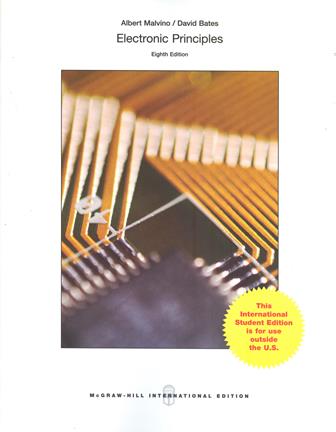書籍分類

Electronic Principles 8/e
作者:Albert Malvino, David Bates
原價:NT$ 1,300
ISBN:9781259252662
版次:8
年份:2016
出版商:McGraw-Hill
頁數/規格:1100頁/平裝彩色
版次:8
年份:2016
出版商:McGraw-Hill
頁數/規格:1100頁/平裝彩色
內容介紹 本書特色 目錄
- Description
This eighth edition of Malvino’s classic Electronic Principles offers students a definitive overview of electronic circuits and devices. Expert knowledge of electronic devices is presented in a stimulating, clearly written, conversational style. The new, streamlined book design is full-color throughout, with ample, clear illustrations. Greater emphasis on modern integrated circuit (IC) technology, and the revision of nearly one third of the previous edition’s chapter problems and review questions refresh this text while retaining its proven approach.
In addition to the text there is a wealth of supplementary material included for both student and instructor. An upgraded Experiments Manual, the optional use of MultiSIM software, an instructor’s manual with an Instructor Productivity Center CD-ROM, and the brand new Online Learning Center website make this text a powerful learning tool.
Electronic Principles is written for electronics students who have done course work in basic DC/AC circuit analysis, along with algebra and trigonometry prerequisites. The book gives clear, accessible coverage of basic electronics concepts in the first half of the book, then applies these to the important electronic circuits and devices most widely used in today’s industry.
In addition to the text there is a wealth of supplementary material included for both student and instructor. An upgraded Experiments Manual, the optional use of MultiSIM software, an instructor’s manual with an Instructor Productivity Center CD-ROM, and the brand new Online Learning Center website make this text a powerful learning tool.
Electronic Principles is written for electronics students who have done course work in basic DC/AC circuit analysis, along with algebra and trigonometry prerequisites. The book gives clear, accessible coverage of basic electronics concepts in the first half of the book, then applies these to the important electronic circuits and devices most widely used in today’s industry.
分類位置:
理工 > 電子/電機 > 電子學


